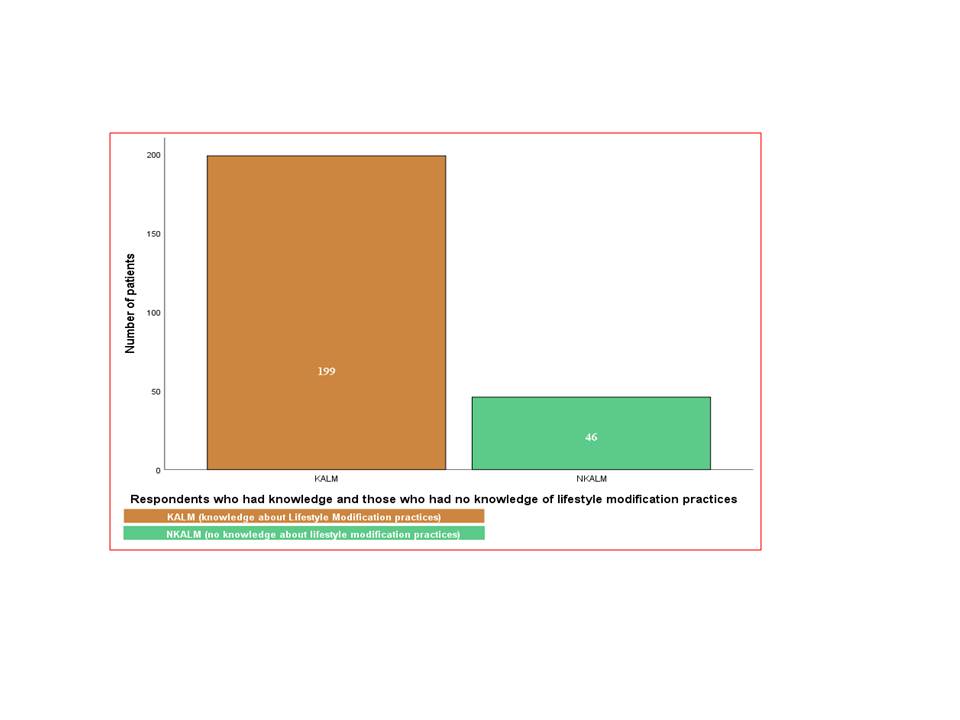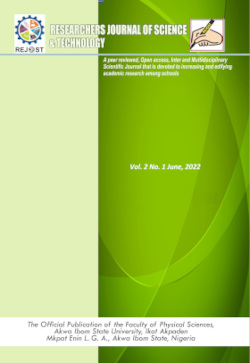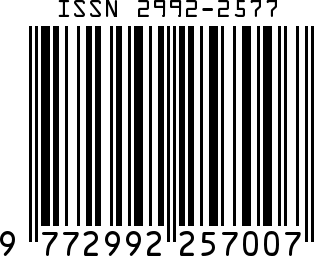Lifestyle Modifications and the Efficacy of Dietary Supplements among Hypertensive Patients at The University of Calabar Teaching Hospital, Calabar, Cross River State
Keywords:
Dietary Supplements, Efficacy; Hypertension, Lifestyle Modification, PatientsAbstract
Hypertension is largely asymptomatic, especially in the early stages. Most patients are detected to have it incidentally when admitted to the hospital for an unrelated disease. Prolonged hypertension is a major risk factor for stroke, coronary artery disease, heart failure, atrial fibrillation, peripheral arterial disease, vision loss, kidney disease, and dementia. These are aggravated by lifestyle factors including excess salt intake, too much body weight, excessive smoking and alcohol consumption. Lifestyle modification and dietary supplements have been used in combination with prescribed medications to manage hypertension. This study aims to assess lifestyle modification practices and the efficacy of dietary supplements among hypertensive patients in the University of Calabar teaching hospital (UCTH). UCTH is an important health facility that caters for the health care needs of the Calabar public. The study was a prospective cross - sectional study comprising 245 respondents. Data collection was done through interview-based and structured questionnaires. Descriptive statistics of frequency distribution and percentage were used to analyze the data. Results showed 78.35% (n = 199) out of 245 patients knew about lifestyle modification practices, 82.68% (n = 210) monitored their blood pressure regularly, 58.66% (n = 149) minimized stress situations, 57.09% (n = 145) observed cessation of smoking, and 49.21% (n = 125) reduced alcohol consumption. 43.31% (n = 110) consumed less salt in meals. 80.40% (n = 197) of respondents utilize dietary supplements in lowering blood pressure, while 75.10% (n = 184) affirmed that dietary supplements are effective in lowering of blood pressure. Most utilized supplements were calcium [57.55% (n = 141)], garlic [55.10% (n = 135)], Omega-3 fatty acids [54.29% (n = 133)], and fish oil [52.24% (n = 128)]. [51.02% (n = 125)]. Findings revealed that the majority of hypertensive patients have knowledge of lifestyle modification practices and have utilized dietary supplements. However, there is still a need to bridge the information gap to reach hypertensive patients who are still unaware of the benefits of lifestyle modification practices and dietary supplements.
References
Afolayan, A. J. & Wintola, O. A. (2014). Dietary supplements in the management of hypertension and diabetes: A review. African Journal of Traditional and Complementary Alternative Medicine, 11(3): 248–258.
Bethesda, M. D. (2004). The seventh report of the joint national committee on prevention, detection, evaluation, and treatment of high blood pressure. National Heart, Lung, and Blood Institute (US): 04-5230.
Borghi, C. & Cicero, A. F. (2016). Nutraceuticals with a clinically detectable blood pressure‐lowering effect: a review of available randomized clinical trials and their meta‐analyses. British Journal of Clinical Pharmacology, 83(1): 163–171.
Carretero, O. A. & Oparil. S. (2000). Essential hypertension, Part I: Definition and etiology. Circulation, 101(3): 329-335.
Campbell, R. C., Lackland, D., Lisheng, L. & Niebylski, M. (2015). Using the global burden of disease study to assist development of nation-specific fact sheets to promote prevention and control of hypertension and reduction in dietary salt: A resource from the world hypertension league. The Journal of Clinical Hypertension, 17(3): 23 -78.
CDC (2015). High blood pressure Fact sheet. Archived from the original on 6 March 2016. Retrieval 6 June, 2023.
Diao, D., Wright, J. M., Cundiff, D. K. & Gueyffier, F. (2012). Pharmacotherapy for mild hypertension. The Cochrane Database of Systematic Reviews, 8 (8): CD006742.
Dibaba, D. T., Xun, P., Song, Y., Rosanoff, A., Shechter, M. & He, K (2017). The effect of magnesium supplementation on blood pressure in individuals with insulin resistance, prediabetes, or noncommunicable chronic diseases: a meta-analysis of randomized controlled trials. American Journal of Clinical Nutrition, 106(3): 921–929.
Durai, P., Batool, M., Shah, M., & Choi, S. (2015). Middle East respiratory syndrome coronavirus: Transmission, virology and therapeutic targeting to aid in outbreak control. Experimental & Molecular Medicine, 47(8): 181.
Eckman, M. & Kirk, K. (2013). Pathophysiology: Made incredibly easy (5th ed.). Philadelphia: Wolters Kluwer Health.
Fletcher, J. (2020). Best supplements for lowering blood pressure. Vailable https://www.medicalnewstoday.com. Retrieved on 12/02/2023.
FMH (2014). Malaria Control in Nigeria: A strategy for behaviour change communication. Published by the: roll back malaria secretariat. National Malaria Control Programme. Department of Public Health, p. 13.
Ghezelbash, S. & Ghorbani, A. (2012). Lifestyle modification and hypertensive prevention. ARYA Atherosclerosis Journal, 8:202 -207.
Han, H., Fang, X., Wei, X., Liu, Y., Jin, Z., Chen, Q., Fan, Z., Aaseth, J., Hiyoshi, A., He, J. & Cao, Y. (2017). Dose-response relationship between dietary magnesium intake, serum magnesium concentration and risk of hypertension: a systematic review and meta-analysis of prospective cohort studies, Journal of Nutrition, 16: 26.
Hecht, M. (2019). Types & stages of hypertension. Available at https://www.healthline.com/health/types-and-stages-of-hypertension. Retrieved on 19/04/2023.
Huether, S. and McCance, K. (2012). Understanding pathophysiology: Text and study guide package. Health science, 1159.
Ike, S. O., Aniebue, P. N. & Aniebue, U. U. (2010). Knowledge, perceptions and practice of lifestyle - modification measures among Adult. Transaction of the Royal Society of Tropical Medicine and Hygiene, 104(1):55-60.
Iqbal, S., Klammer, N. & Ekmekcioglu, C. (2019). The effect of electrolytes on blood pressure: a brief summary of meta-analyses. Nutrients, 11(6): 1362.
Kebede, T, Taddese, Z. & Girma, A. (2022). Knowledge, attitude and practices of lifestyle modification and associated factors among hypertensive patients on-treatment follow up at Yekatit 12 General Hospital in the largest city of East Africa: A prospective cross-sectional study. PLoS ONE, 17(1): e0262780.
Kubala, J. (2023). 14 Supplements to take for high blood pressure. Available at https://www.healthline.com/nutrition/supplements-lower-blood-pressure. Retrieved on 12/05/2023.
Lackland, D. T. & Weber, M. A. (2015). Global burden of cardiovascular disease and stroke: hypertension at the core. The Canadian journal of cardiology, 31(5); 569 - 571.
Mill, K. T., Stefanescu, A. & He, J. (2020). The global epidemiology of hypertension. Nature Review Nephrology, 16: 223–237.
Mancia, G, De Backer, G., cDominic, Z. A., ciflova, R., Fagard, R. and Germanic, G. (2007). Guidelines for the management of Arterial Hypertension. European Heart Journal, 28(12): 1462-1536.
Maria, P. G. De Ocampo, Araneta, M. R., Macera,C. A., Alcaraz, J. E. Moore, T. R. & Chambers, C. D. (2018). Folic acid supplement use and the risk of gestational hypertension and preeclampsia. Journal of Australian college of midwives, 31(2): 234-361.
Musini, V. M., Tejani, A. M., Bassett, K., Puil, L. & Wright, J. M. (2019). Pharmacotherapy for hypertension in adults 60 years or older. The Cochrane Database of Systematic Reviews. 6 (6): CD000028.
Naish, J., & Court, D. S. (2014). Medical sciences (2 Ed ). P.562. ISBN 978072052491.
Peter, L. (2009). Stroke in developing countries: epidemiology, impact and policy implications. Norwich: School of International Development, University of East Angtia.
Poulter, N. R., Prabhakaran, D. & Caulfield, M. (2015). Hypertension. Lancet. 386 (9995): 801–812.
Rysz. J., Franczyk, B., Banach, M. & Gluba-Brzozka, A. (2017). Hypertension - Current Natural Strategies to Lower Blood Pressure, Curr Pharm Des, 23 (17); 2453-2461.
Whelton, P. K., Carey, R. M. & Aronow, W. S. (2017). ACC/AHA/AAPA/ABC/ACPM/-AGS/APhA/ASH/ASPC/NMA/PCNA guideline for the prevention, detection, evaluation, and management of high blood pressure in adults: a report of the American College of Cardiology/American Heart Association Task Force on Clinical Pr. J Am Coll Cardiol, 71: e127‐e248.
WHO (2014). World Health Organization in collaboration with the World Heart Federation and the World Stroke Organization. p. 38.
WHO (2013). International society of hypertension (ish) statement on management of hypertension. Journal of hypertension, 21 (11): 1983 - 92.

Downloads
Published
How to Cite
Issue
Section
License
Copyright (c) 2023 Researchers Journal of Science and Technology

This work is licensed under a Creative Commons Attribution-NonCommercial-NoDerivatives 4.0 International License.




